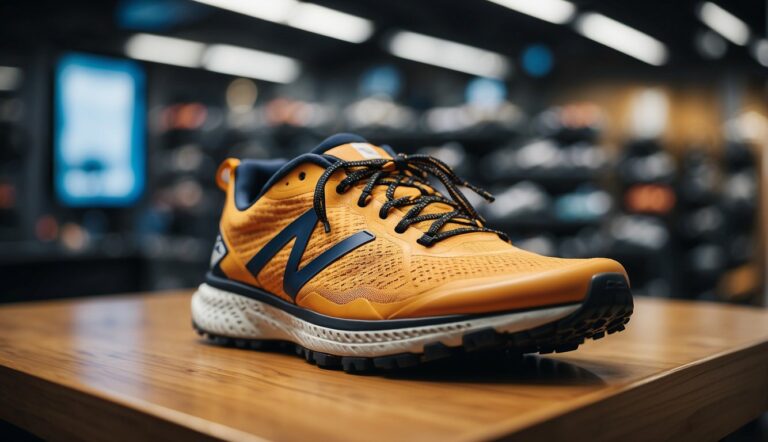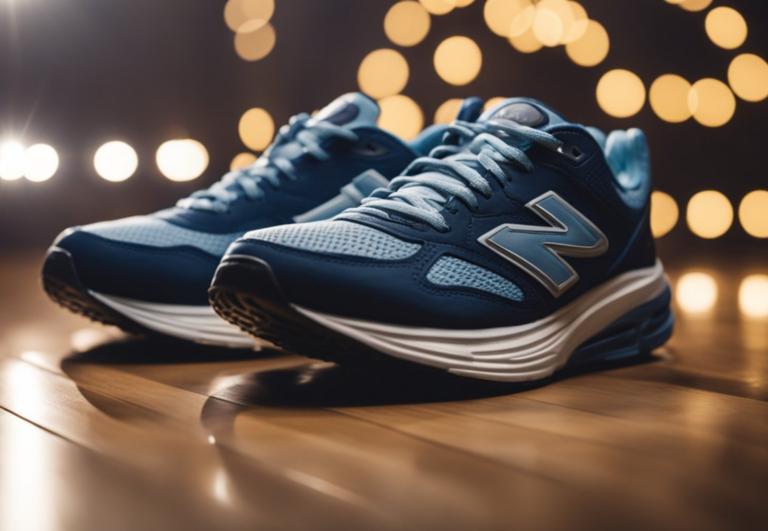What’s the Best Way to Break in New Trail Running Shoes? Essential Tips for Comfort and Durability
As a UESCA certified running coach, I’ve seen the excitement of purchasing new trail running shoes—those sleek designs promising adventure on rugged paths.
Yet, before testing their limits on the trail, ensuring a proper break-in is crucial. Starting with shorter, less technical excursions allows the materials of the shoes to mold to your feet, enhancing comfort and reducing the chance of blisters or hot spots that can occur with stiff, new footwear.
The break-in period varies for each runner and shoe, but a gradual approach is key. Begin with easy runs on familiar terrain, listening to your body and noting any discomfort. A well-fitting shoe should feel snug but not tight, with enough room to wiggle your toes, and without any slipping at the heel.
Remember, the goal is for your shoes to become an extension of your feet, providing a seamless interaction with the terrain for the many miles ahead.
Initial Steps to Break in New Trail Running Shoes
When breaking in trail running shoes, starting with simple steps at home and progressing to outdoor runs can make the transition smoother and more comfortable for your feet.
Wearing Shoes Around the House
I recommend wearing your new trail running shoes around the house to acclimate your feet gradually. This low-impact environment allows you to feel for any potential discomfort without the commitment of being miles away on a trail. It’s crucial to pay attention to your feet’s feedback and make note of any areas where you feel excessive pressure or friction.
Short Runs and Alternating Shoes
Once the shoes feel comfortable at home, start with short runs. I advise a series of short runs, no longer than your usual distance, and at a reduced intensity to prevent blisters or discomfort.
| Run No. | Distance | Notes |
|---|---|---|
| 1 | 1-2 miles | Focus on shoe feel |
| 2 | 2-3 miles | Assess comfort and fit |
| 3 | 3-4 miles | Evaluate any adjustments |
Alternating between your new shoes and old ones can be beneficial. By not wearing the new shoes for consecutive runs, you give your feet time to adjust, which can reduce the risk of injury. Listen to how your feet feel in the new and old shoes, and incrementally increase the distance in the new shoes based on comfort.
An Overview of the Trail Shoe Break-In Process
Properly breaking in new trail running shoes is essential to maximize comfort and prevent injury. I’ll guide you through the importance of fit, shoe construction, and considering your gait and foot type.
The Importance of Fit and Comfort
The right fit is paramount to ensure comfort and prevent blisters or other issues. The shoe should be snug but not tight, with ample room for toe movement. When trying on new shoes, always consider the intended use—trail running shoes often need extra space to account for foot swelling on longer runs.
Material and Shoe Construction
Trail running shoes are constructed from various materials, each playing a role in the break-in period. Look for a flexible sole and upper material that adapts quickly to your foot’s shape.
Shoes with ample cushioning provide shock absorption and can reduce break-in time, ensuring a smoother transition during runs.
Gait and Foot Type Considerations
Your gait and foot type significantly influence how your shoes will break in. If you overpronate (roll inward), look for shoes with motion control or stability features. Runners with a neutral gait should focus on cushioning and fit. Understanding your pronation and choosing shoes designed for your foot type can ease the break-in process.
In my experience, breaking in new running shoes involves gradual, consistent wear. It allows the materials to mold to the unique contours of your feet, ensuring that your future runs are comfortable and secure.
Caring for Your Feet During the Break-In Period

Proper care for your feet during the break-in period of new trail running shoes is critical to prevent discomfort and injury. Attention to socks, blister management, and lace adjustment can enhance the experience.
Choosing the Right Socks
When breaking in new trail running shoes, I always start with a pair of well-fitting, moisture-wicking socks. They not only provide an additional layer of cushion but also reduce the chance of blisters and hot spots. Here’s what I recommend:
- Material: Choose socks made of synthetic fibers or merino wool for optimal moisture management.
- Fit: Ensure the socks are snug but not tight, without excess material that can wrinkle and cause pressure points.
Managing Blisters and Hotspots
Despite preventive measures, blisters and hotspots can still occur. To manage these:
- Protective Patches: Apply gel patches or adhesive moleskin to areas prone to blisters before they develop.
- Treatment: If a blister does form, clean the area and cover it with a sterile bandage. Avoid popping blisters as this can lead to infection.
Adjusting Laces for Optimal Fit
Adjusting the laces can significantly alter the fit and feel of your trail running shoes. Here’s how I ensure a good fit:
- Loosen/Tighten: Start with the laces loose and gradually tighten them until they are snug but not constricting, allowing for natural foot swelling during runs.
- Lacing Techniques: Experiment with different lacing techniques to address specific issues, such as heel slippage or pressure points on the top of the foot.
Increasing Mileage Safely
When incorporating new trail running shoes into my regimen, I prioritize a gradual increase in mileage to prevent pain and injuries. I’ll detail strategies for transitioning to longer distances and the importance of staying attuned to your body’s signals.
Transitioning to Longer Distances
I start by setting a baseline of my current weekly mileage, ensuring it’s comfortable with no undue stress or pain. If I’m running 10 miles per week and aiming for 20, I employ the 10% rule—increasing my mileage by no more than 10% per week. On easy trails, I add short, incremental gains to allow my body to adapt to the new demands.
For example:
| Week | Total Mileage |
|---|---|
| 1 | 10 miles |
| 2 | 11 miles |
| 3 | 12.1 miles |
| 4 | 13.3 miles |
| 5 | 14.6 miles |
I always make sure the additional mileage consists of low-intensity runs, to keep the training load manageable.
Listening to Your Body
I pay close attention to how my body responds during and after runs. Any signs of pain beyond typical muscle soreness or the onset of injuries are indicators to pull back. Adjusting my pace and giving my body time to recover after long-distance runs is crucial. If pains or discomfort arise, I take an extra rest day or cross-train. It’s better to miss one run than to be sidelined for an entire season. Remember, endurance builds over time—it’s a marathon, not a sprint.
Tips from Running Specialists
In my experience as a UESCA certified running coach, I’ve found that breaking in new trail running shoes is critical to a runner’s comfort and performance. Knowing when to seek advice from a specialist and how to tailor your break-in strategy can make a significant difference.
When to Consult a Specialist
When you purchase new trail running shoes, it’s best to visit a running specialty store. Trained staff there can perform a gait analysis to determine the optimal type of shoe for your running style.
If you notice persistent discomfort or blisters despite a gradual break-in, consult a specialist. They can assess whether the issue is with the break-in process or the fit of the shoe. Always check the store’s return policy before buying, just in case the shoes aren’t the right fit for you.
Personalizing Your Break-In Strategy
Every runner is unique, hence the break-in strategy should be personalized. Here’s a basic framework to customize:
- First Week: Wear them at home
- Second Week: Short runs (1-2 miles)
- Third Week: Varied terrain (increase mileage cautiously)
Listen to your body and adjust as necessary. If uncertain about the fit or feel, a running coach or trainer can provide guidance based on their expertise with the best running shoes and individual needs.






